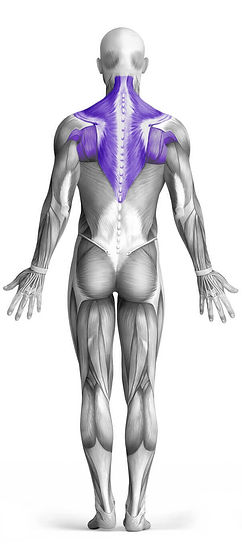Kettlebell One Arm Row 101 Video Tutorial
0

Exercise Synopsis
Target Muscle Group
Upper Back
Execution
Compound
Force Type
Pull
Required Equipment
Kettlebell
Fitness Level
Intermediate
Variations
None
Alternatives
Timer
Hour
Minute
Second
Stopwatch
00:00:00:00
Overview
The Kettlebell One Arm Row is a strength exercise that primarily targets the upper back, specifically engaging the lats and biceps as secondary muscles. This unilateral movement helps improve muscular imbalances by working one side of the body at a time, while also activating the core for stability. Using a kettlebell as the equipment, the exercise is performed by hinging at the hips, rowing the kettlebell towards your torso, and controlling the descent to maximize muscle engagement. It is highly effective for building upper body strength and improving posture.
How to Perform
Begin by positioning your left leg forward, keeping it bent at the knee, and rest your left hand on your knee for support.
Lower your torso toward the ground while ensuring your back leg is extended behind you with a slight bend to maintain balance.
Focus on activating your shoulder blade to initiate the movement, pulling the kettlebell upwards toward your chest or rib cage.
As you lift the kettlebell, bend your elbow to guide the motion, engaging your upper back muscles.
Slowly lower the kettlebell back to the starting position, maintaining control throughout the movement.
Repeat the movement for the desired number of repetitions, ensuring proper form and avoiding jerky motions to target the upper back muscles effectively.
★ Bonus: For exercises that involve external weights (such as dumbbells, barbells, or machines), the One Rep Max (1RM) calculator can help you estimate your maximum lifting capacity. Use it to track your strength progress and adjust your training for optimal results.
Tips
Keep your back flat and maintain a neutral spine throughout the movement.
Engage your core for stability to protect your lower back.
Start with your left leg forward, knee bent, and right leg extended behind you.
Grip the kettlebell with one hand, keeping your arm extended toward the floor.
Initiate the movement by retracting your shoulder blade, pulling the kettlebell toward your torso.
Keep your elbow close to your body as you row the kettlebell upwards.
Avoid using momentum; focus on controlled, smooth movements.
Lower the kettlebell slowly back to the starting position.
Keep your head in a neutral position, looking at the floor.
Perform the movement on both sides to ensure balanced strength development.
How Not to Perform
Avoid Rounding Your Back: Do not let your back round or hunch during the movement. This can put unnecessary strain on your lower back. Keep your spine neutral to avoid injury and maintain proper form.
Don’t Use Momentum: Refrain from jerking or swinging the kettlebell to complete the movement. Using momentum reduces the effectiveness of the exercise and can cause injury. Focus on slow, controlled movements.
Don’t Overreach: Avoid reaching too far forward or letting your arm drop too low. Keep your shoulder aligned with your body to maximize engagement of the upper back muscles without straining the shoulder joint.
Don’t Flare Your Elbow: Keep your elbow close to your body as you row the kettlebell. Flared elbows can reduce muscle engagement and place unnecessary stress on the shoulder joint.
Avoid Arching Your Neck: Don’t strain your neck by looking up or forward. Keep your head in a neutral position, looking toward the floor to maintain spinal alignment and prevent neck strain.
Don’t Let Your Hips Rotate: Avoid allowing your hips to open up or twist during the exercise. Keeping your hips square and stable ensures proper muscle activation and minimizes the risk of injury.
Don’t Rush the Reps: Speeding through the reps may cause you to lose focus on form and reduce muscle engagement. Perform each rep with precision, focusing on squeezing the upper back and maintaining control throughout.
Avoid Overextending the Elbow at the Bottom: Do not fully extend your arm at the bottom of the movement. A slight bend in the elbow keeps the muscles under tension and ensures better engagement of the lats and upper back.
Don’t Let Your Body Collapse: Ensure your core is engaged to prevent your torso from collapsing towards the floor. A strong core helps to maintain stability and reduce the risk of lower back strain.
Avoid Excessive Weight: Using too heavy of a kettlebell can lead to improper form and increased risk of injury. Choose a weight that allows you to perform the exercise with good form and control.
Variations
Variations of fitness exercises refer to different ways of performing a specific exercise or movement to target various muscle groups, intensities, or goals. These variations aim to challenge the body differently, prevent plateaus, and cater to individuals with varying fitness levels.
Alternatives
Alternative exercises in fitness refer to different movements or activities that target similar muscle groups or serve the same training purpose as the primary exercise. These alternative exercises can be used as substitutes when the original exercise is unavailable or challenging to perform due to various reasons such as equipment limitations, injuries, or personal preferences.








